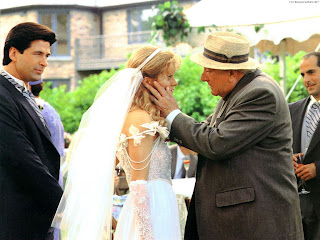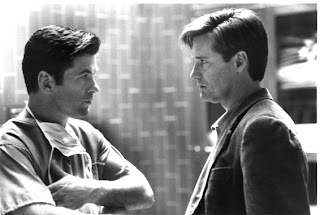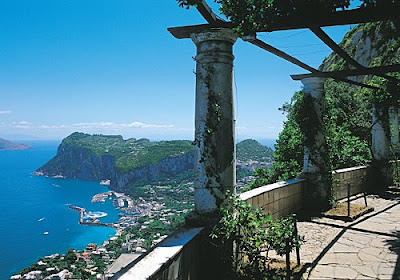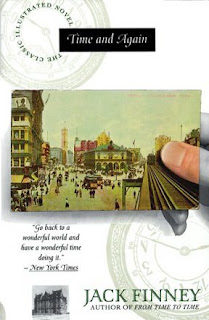
- Cardinal Newman
It was mentioned to me recently (heh :) that I seem to dissent a lot in the area of Catholic teaching. Maybe I do, although offhand I can only think of a few things I disagree with, but I just wanted to say that dissent is not a bad thing necessarily, and I happened to see an interesting article in U.S.Catholic that backs me up -
Catholic dissent -- When wrong turns out to be right - with examples of some famous dissenters of the past who were later vindicated ..... Jesuit theologian
John Courtney Murray, Nun
Mary Ward (who made the Spiritual Exercises :),
Galileo, and the soon to be canonized Cardinal
John Henry Newman. As the writer points out at the end of the article ....
It would be, of course, rash to conclude from this brief overview that dissent is always and everywhere a legitimate option. Catholics believe the teachings of the pope and the bishops are not just opinions to be lightly regarded or disregarded. Belief in the teaching authority of the church is a part of the faith, and authority is generally to be given the benefit of the doubt. An argumentative and contentious attitude is not conducive to the spirit of unity that ought to mark the People of God.
On the other hand, history demonstrates that some teachings, even some that appeared to be solidly entrenched in scripture and tradition and taught at the highest levels, were not as well-grounded as the magisterium at the time believed them to be. This is what the past reports back to us in myriad ways. No one can live in a hermetically sealed box oblivious to the experience of the Body of Christ as it has been lived; historical unconsciousness is not an option.
All are called to wrestle with the facts and their implications for difficult matters in our own time. At the very least, history should stimulate a bit of humility-making the church at every level less prone to pontificate despite natural inclinations to do so. The church moves and grows and learns through the ages-and the Spirit blows where it will.The part of the article I found most interesting was about Cardinal Newman - I had no idea he had been such an upholder of the worth of the layity's opinion in church matters. Here's the bit of the article that deals with him snd his dissent ....
****************************
Even John Henry Newman, often cited as the greatest Catholic figure of the 19th century, took a significant dissenting stance and suffered the consequences. Ironically, this dispute was over an occasion of dissent by hundreds of thousands of Christians that occurred 1,400 years before Newman was born.
In 1859 Newman was 59 and past his prime physically though not intellectually. As the editor of the magazine Ramparts, he got into trouble with the English hierarchy for asserting in an article that the British bishops would be well-advised to seek the counsel of lay Catholics in important matters. Such a view was regarded as rash and disruptive of good order. He was subsequently informed by his own bishop that the next issue of Ramparts, July 1859, would be his last as editor.
Newman accepted the decision somewhat badly, then set to work producing an exceptionally long study that constituted the entire July issue. It was titled "Consulting the Faithful on Matters of Doctrine," and it set off a firestorm of controversy because Newman placed himself in bold opposition to well-established teaching and interpretation.
In his study, Newman returned to a subject on which he was unquestionably the world's leading authority: the fourth-century Arian heresy (a movement that claimed that Jesus is not God, only God's greatest creation). Newman reviewed exhaustively a 60-year period that followed the Council of Nicaea in 325; the council had condemned Arianism and formulated in the famed Nicene Creed the orthodox position. However, during that post-conciliar period, Newman showed, the overwhelming number of bishops and dozens of regional church councils dismissed the Nicene formula and embraced Arianism. Even Pope Liberius signed a pro-Arian statement, though probably under pressure.
So great and so widespread was the Arian position, said Newman, that it would surely have become official Catholic doctrine, except for one thing: the Catholic laity. In Europe, Asia, and the Middle East they dissented from what their priests, their bishops, even their pope was proposing. Jesus is true God, they insisted in the face of excommunication, persecution, and (in some cases) martyrdom.
As it turned out, they won. At the First Council of Constantinople in 381, the Arian heresy was finally laid to rest, and the hierarchy agreed to abide by the faith of the people. Summarizing this remarkable period, Newman wrote, "The Nicene dogma was maintained during the greater part of the fourth century not by the unswerving firmness of the Holy See or councils of bishops but by the consensus of the fidelium [the faithful].
"On the other hand, I say that there was a temporary suspension of the functions of the ecclesia docens [teaching church]. The body of the bishops failed in their confession of the faith. They spoke variously against one another. There was nothing after Nicaea of firm, consistent testimony for 60 years. There were untrustworthy councils, unfaithful bishops . . . misguidance, delusion, hallucination . . . extending itself into nearly every corner of the Catholic Church."
From all this Newman drew some shocking conclusions that have been reverberating in the church ever since: that there is in the body of the faithful (the laity) an "instinct" for the truth, that this "sense of the faithful" must never be ignored or taken for granted by the church's official teachers, that authentic church teaching therefore comes about through a kind of "conspiracy" or cooperative enterprise on the part of both laity and hierarchy, and finally that certain lapses (or "suspensions") can occur when one side or the other of this living body temporarily ceases to function.
This was radical interpretation indeed, and there was immediate protest. Was Newman actually saying that the infallibility of the church doesn't reside exclusively in the church's head? asked the prominent English theologian John Gillow. Newman replied that he meant what he said: Because the promise of the Holy Spirit was given to the whole church, the whole church must be a party to its decisions.
This seemingly unprecedented elevation of the laity was particularly abhorrent to Msgr. Edward Talbot, a leading churchman, who asked in exasperation, "What is the province of the laity? To hunt, to shoot, to entertain. These matters they understand, but to meddle with ecclesiastical matters they have no right at all. . . . Dr. Newman is the most dangerous man in England."
Newman would not recant; thus charges were brought against him before the Vatican's Office of Propaganda by several English bishops, and a protracted investigation got underway. For the next six years Newman lived under a cloud, his creativity seriously impeded.
"This age of the church is peculiar," he complained. "In former times primitive or medieval, there was not the extreme centralization now in use . . . There was true private judgment in the primitive and medieval schools. . . . There are no schools now, no freedom . . . of opinion, no exercise of the intellect."
A decisive resolution never came from Rome, the affair passed, and in his last days Newman was made a cardinal for his lifetime contributions to the church.
Following his death in 1890, theologians began to further develop his concept of the church as an organism of interactive parts. That theology is still in process, but it achieved a measure of official recognition at Vatican II, which Pope Paul VI called "Newman's council." Said the Dogmatic Constitution on the Church, "The body of the faithful as a whole, anointed as they are by the Holy One, cannot err in matters of belief . . . thanks to a supernatural sense of faith which characterizes the people as a whole. . . ."
And in another place the constitution declared, "Christ, the great prophet . . . continually fulfills his prophetic office . . . not only through the hierarchy who teach in his name . . . but also through the laity."
*************************


























